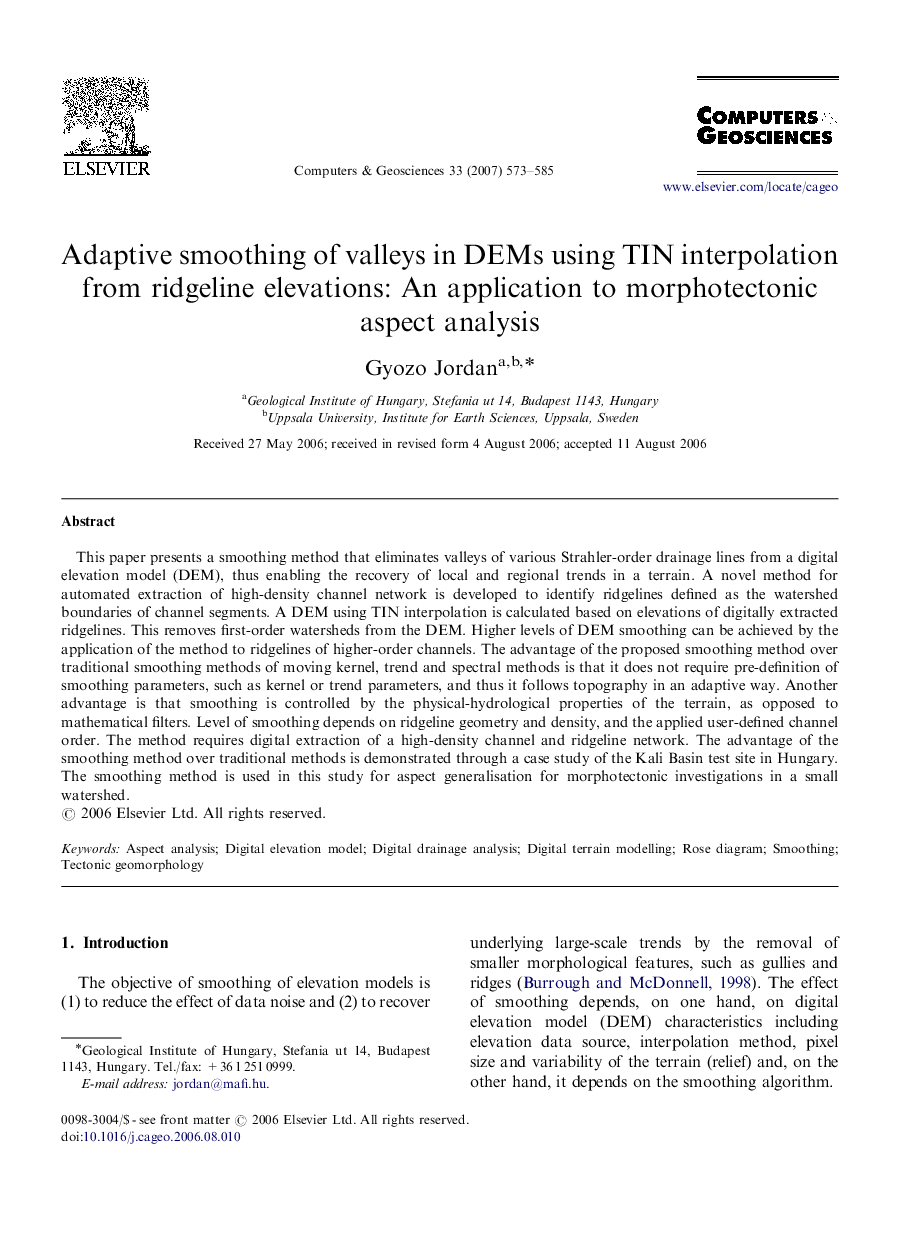| Article ID | Journal | Published Year | Pages | File Type |
|---|---|---|---|---|
| 508200 | Computers & Geosciences | 2007 | 13 Pages |
This paper presents a smoothing method that eliminates valleys of various Strahler-order drainage lines from a digital elevation model (DEM), thus enabling the recovery of local and regional trends in a terrain. A novel method for automated extraction of high-density channel network is developed to identify ridgelines defined as the watershed boundaries of channel segments. A DEM using TIN interpolation is calculated based on elevations of digitally extracted ridgelines. This removes first-order watersheds from the DEM. Higher levels of DEM smoothing can be achieved by the application of the method to ridgelines of higher-order channels. The advantage of the proposed smoothing method over traditional smoothing methods of moving kernel, trend and spectral methods is that it does not require pre-definition of smoothing parameters, such as kernel or trend parameters, and thus it follows topography in an adaptive way. Another advantage is that smoothing is controlled by the physical-hydrological properties of the terrain, as opposed to mathematical filters. Level of smoothing depends on ridgeline geometry and density, and the applied user-defined channel order. The method requires digital extraction of a high-density channel and ridgeline network. The advantage of the smoothing method over traditional methods is demonstrated through a case study of the Kali Basin test site in Hungary. The smoothing method is used in this study for aspect generalisation for morphotectonic investigations in a small watershed.
